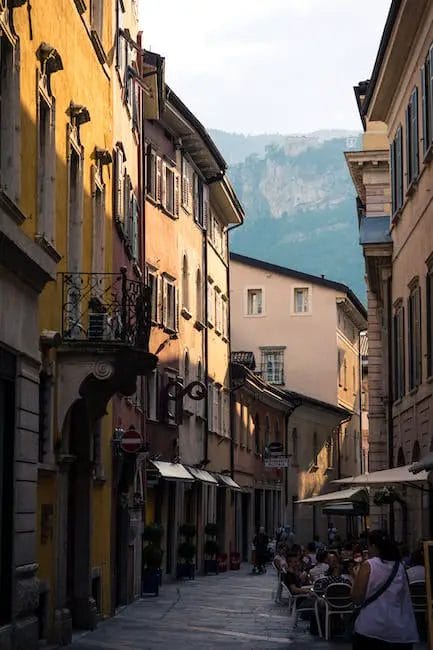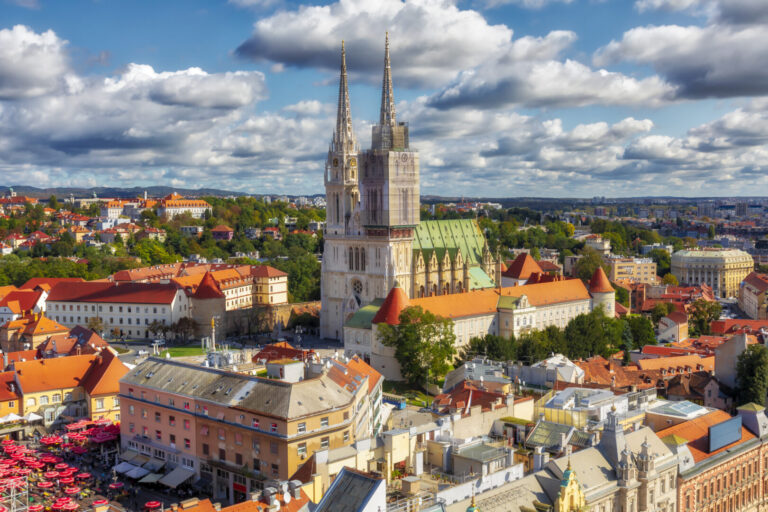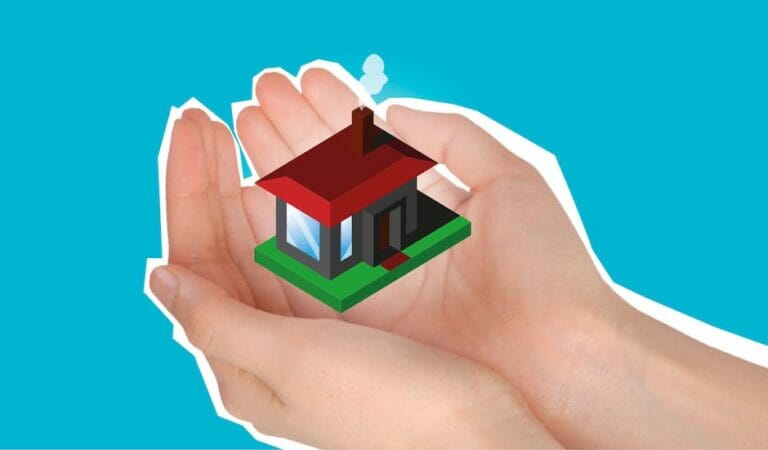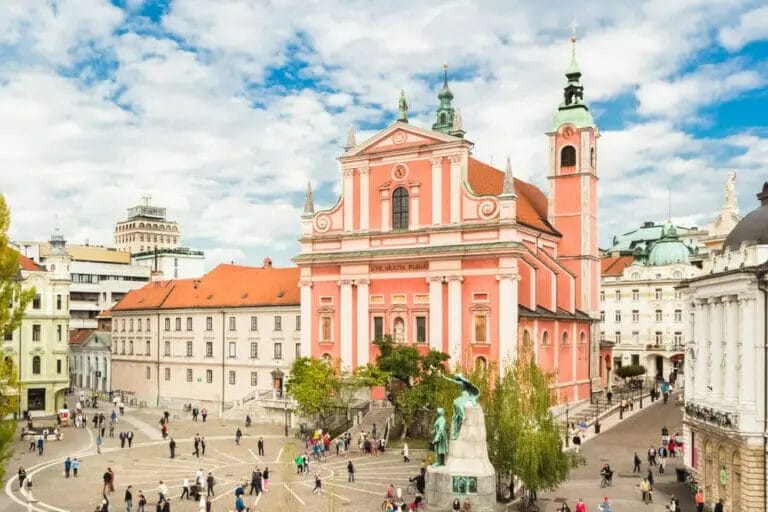Where is Slovenia? Why You Need to Visit?
Are you planning your next European Adventure and you came to know about Slovenia and wondering Where is Slovenia Located? And should you visit this country or skip it?
After visiting Slovenia last year one thing I can say for sure is that Slovenia is worth visiting, I will try to answer all your questions about Slovenia and will help you decide why Slovenia should be on your bucket list.
Slovenia, a small country nestled in the heart of Europe, often goes unnoticed by travelers seeking adventure and cultural experiences.
However, this hidden gem is a destination that should not be overlooked. With its stunning landscapes, rich cultural heritage, and affordable travel options, Slovenia offers a unique and unforgettable experience for all types of travelers.
Key Takeaways
- Slovenia is a hidden gem in Europe that is worth visiting.
- Slovenia is located in Central Europe, bordered by Italy, Austria, Hungary, and Croatia.
- Slovenia boasts stunning landscapes, rich cultural heritage, and thrilling adventure activities.
- Slovenia’s cuisine and wine regions are worth exploring, and the country hosts vibrant festivals and events.
- Slovenia is a leader in sustainable tourism and offers affordable travel options and various accommodation choices.
Where is Slovenia?

Located in Central Europe, Slovenia shares borders with Italy to the west, Austria to the north, Hungary to the northeast, and Croatia to the south and southeast.
Despite its small size – roughly equivalent to New Jersey – Slovenia boasts a diverse geography that ranges from picturesque Alpine mountains in the northwest to rolling hills covered with vineyards in the east.
The country is also home to stunning lakes such as Lake Bled and Lake Bohinj as well as charming coastal towns along the Adriatic Sea.
Which are the Slovenia Bordering Countries?
If you are thinking about combining your trip to Slovenia after visiting some other countries in Europe then below are the bordering Countries of Slovenia:
- Italy: Slovenia shares a border with Italy to the west. The two countries have a shared history and cultural influence, especially in the coastal region of Slovenia known as Slovenian Istria.
- Austria: Slovenia’s northern border is shared with Austria. The Slovenian and Austrian Alps form a stunning natural boundary between the two countries, offering picturesque landscapes and opportunities for outdoor activities.
- Hungary: To the northeast, Slovenia shares a border with Hungary. This border region is characterized by rolling hills, vineyards, and historic towns, making it a popular destination for wine lovers and history enthusiasts.
- Croatia: Slovenia’s southern border is shared with Croatia, a neighboring country known for its stunning coastline along the Adriatic Sea. The border region offers a mix of natural beauty, including the famous Postojna Cave and the picturesque town of Piran on the Slovenian coast.
These bordering countries provide opportunities for cultural exchange, tourism, and economic cooperation, contributing to the diversity and richness of the region.
Was Slovenia a Part of Russia?
No, Slovenia was never a part of Russia. Slovenia is a country located in Central Europe, while Russia is a country located in both Eastern Europe and Northern Asia. They are separate and independent countries with different histories, cultures, and languages.
Should you visit Slovenia because of the Rich Cultural History?
Slovenia has a fascinating history that dates back thousands of years. From ancient Roman settlements to medieval castles perched on hilltops, countless historical sites are waiting to be explored.
Ljubljana Castle is one such example; located atop Castle Hill overlooking Ljubljana’s old town, it offers panoramic views of the city below.
In addition to its historical landmarks, Slovenia also prides itself on preserving its traditions and cultural heritage. The country celebrates numerous festivals throughout the year where locals showcase traditional music, dance performances,and handicrafts passed down through generations.
Natural Beauty: Discovering Slovenia’s Stunning Landscapes
| Location | Attraction | Distance from Ljubljana | Visitors per year |
|---|---|---|---|
| Triglav National Park | Mount Triglav | 1.5 hours | Over 1 million |
| Postojna Cave | Underground cave system | 1 hour | Over 500,000 |
| Lake Bled | Island church | 1 hour | Over 1 million |
| Soča River | Crystal clear water | 2 hours | Over 500,000 |
| Logar Valley | Alpine scenery | 1.5 hours | Over 100,000 |
One of Slovenia’s greatest assets is its natural beauty which can rival any other European destination.
The Julian Alps dominate much of northern Slovenia offering breathtaking vistas for hikers and nature enthusiasts alike.
Triglav National Park encompasses these majestic mountains providing endless opportunities for outdoor activities such as hiking, mountain biking, and even paragliding.
For those seeking a more tranquil experience, Slovenia’s lakes are a must-visit.
Lake Bled, with its iconic island church and medieval castle perched on a cliffside, is often considered one of the most beautiful lakes in Europe. Lake Bohinj, located nearby, offers a quieter alternative with its pristine waters surrounded by untouched nature.
Adventure Activities: Thrilling Things to Do in Slovenia
Slovenia is an adventure lover’s paradise with an abundance of thrilling activities to choose from.
The country’s diverse landscapes provide the perfect backdrop for adrenaline-pumping experiences such as white-water rafting on the emerald-green Soča River or canyoning through narrow gorges and waterfalls.
For those who prefer to stay on land, Slovenia offers excellent opportunities for rock climbing and caving. The Postojna Cave system is one of the most famous attractions in the country; visitors can explore its vast underground chambers filled with stalactites and stalagmites.
Culinary Delights: Tasting Slovenia’s Delicious Cuisine
Slovenian cuisine reflects the country’s rich cultural heritage and diverse influences from neighbouring countries.
Traditional dishes often feature locally sourced ingredients such as freshwater fish from rivers or game meat from forests.
One must-try dish is “potica,” a rolled pastry filled with various sweet or savoury fillings like walnuts or tarragon.
Slovenia is also known for its excellent wines; wine regions like Goriška Brda produce high-quality white wines that have gained international recognition.
Wine Tasting: Exploring Slovenia’s Wine Regions
Slovenia may not be as well-known as other European countries when it comes to wine production but it certainly holds its own.
The country boasts several distinct wine regions where visitors can indulge in tastings at local vineyards while enjoying the picturesque landscapes.
The Vipava Valley, for example, is known for its crisp white wines and offers a unique wine tasting experience amidst rolling hills and charming villages.
The Štajerska region in the northeast is famous for its aromatic white wines such as Riesling and Gewürztraminer.
Festivals and Events: Celebrating Slovenia’s Vibrant Culture
Slovenia’s vibrant culture comes alive through its numerous festivals and events held throughout the year.
One of the most popular events is the Ljubljana Summer Festival, which takes place from June to September. This festival showcases a variety of performances including theater, dance, music concerts,and open-air cinema screenings.
Another highlight is Maribor’s Lent Festival, one of Europe’s largest open-air festivals that celebrates music, theatre,and street performances.
Visitors can immerse themselves in Slovenian culture while enjoying live music from local and international artists.
Sustainable Tourism: How Slovenia is Leading the Way
Slovenia has made significant strides in promoting sustainable tourism practices.The country was awarded the title of European Green Capital in 2016 due to its commitment to environmental protection and sustainable development.
Slovenia boasts an extensive network of protected areas including Triglav National Park which ensures that nature conservation remains a priority.
Sustainable transportation options such as cycling routes are also well-developed, making it easy for visitors to explore Slovenia while minimizing their carbon footprint.
Affordable Travel: Why Slovenia is a Budget-Friendly Destination
One of Slovenia’s greatest advantages as a travel destination is its affordability compared to other European countries I have also talked about in detail in Is Slovenia Cheap or Expensive.
Accommodation options range from budget-friendly hostels to cosy guesthouses or even glamping sites nestled in nature.
Prices for meals at local restaurants are also reasonable, making it possible to enjoy delicious Slovenian cuisine without breaking the bank.
Public transportation within cities like Ljubljana or Maribor is efficient and affordable while renting a car allows for more flexibility in exploring the country’s diverse landscapes.
Accommodation Options: Where to Stay in Slovenia
Slovenia offers a wide range of accommodation options to suit every traveler’s needs. For those seeking a unique experience, staying at one of Slovenia’s many eco-friendly farms or guesthouses provides an opportunity to immerse oneself in the local culture and enjoy traditional Slovenian hospitality.
For those who prefer more luxurious accommodations, there are several boutique hotels located in historic buildings that offer modern amenities while preserving their historical charm.
Ljubljana, the capital city, has a variety of hotels ranging from budget-friendly options to high-end establishments.
What Language do Slovenians Speak?
Slovenians speak Slovene, which is the official language of Slovenia. Slovene is a South Slavic language and is closely related to Croatian and Serbian.
If you want to know more about this topic, check out my post about the Slovenian language!
Why You Should Plan Your Next Trip to Slovenia
In conclusion, Slovenia is truly a hidden gem in Europe that offers something for everyone.
Whether you’re seeking adventure activities amidst stunning landscapes, cultural experiences steeped in history and tradition, or simply want to indulge in delicious cuisine and wine, Slovenia has it all.
With its commitment to sustainable tourism practices and affordability as a travel destination, it’s no wonder that this small country is gaining recognition as one of Europe’s must-visit destinations.
So why wait? Start planning your next trip to Slovenia today!
FAQs
What is Slovenia?
Slovenia is a small country located in central Europe. It is bordered by Italy to the west, Austria to the north, Hungary to the northeast, and Croatia to the south and southeast.
Where is Slovenia located?
Slovenia is located in central Europe, bordered by Italy to the west, Austria to the north, Hungary to the northeast, and Croatia to the south and southeast.
What is the capital of Slovenia?
The capital of Slovenia is Ljubljana.
What is the official language of Slovenia?
The official language of Slovenia is Slovene.
What is the currency of Slovenia?
The currency of Slovenia is the euro.
What are some popular tourist attractions in Slovenia?
Some popular tourist attractions in Slovenia include Lake Bled, Postojna Cave, Predjama Castle, Triglav National Park, and the capital city of Ljubljana.
What is the climate like in Slovenia?
The climate in Slovenia varies depending on the region, but it is generally a mix of Mediterranean and continental climates. Summers are warm and dry, while winters are cold and snowy in the mountains.
Do I need a visa to visit Slovenia?
It depends on your nationality. Citizens of the European Union and some other countries do not need a visa to visit Slovenia for up to 90 days. Check with your local embassy or consulate for more information or check at iVisa.







